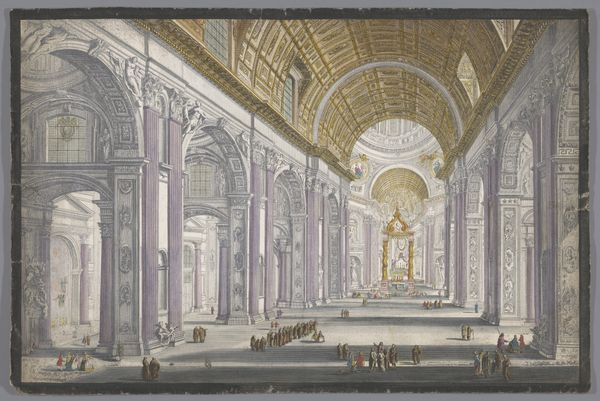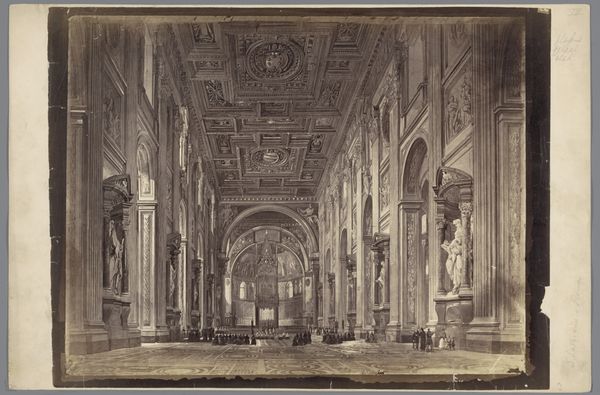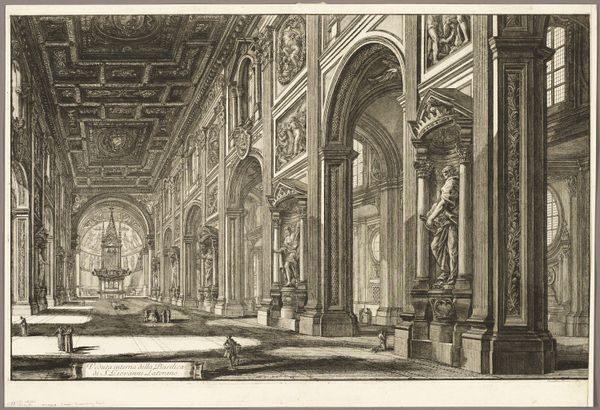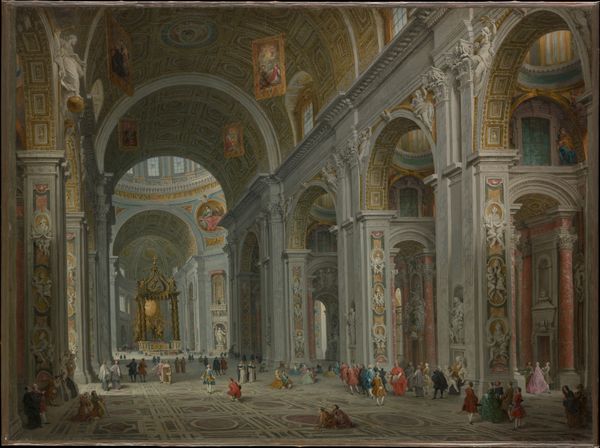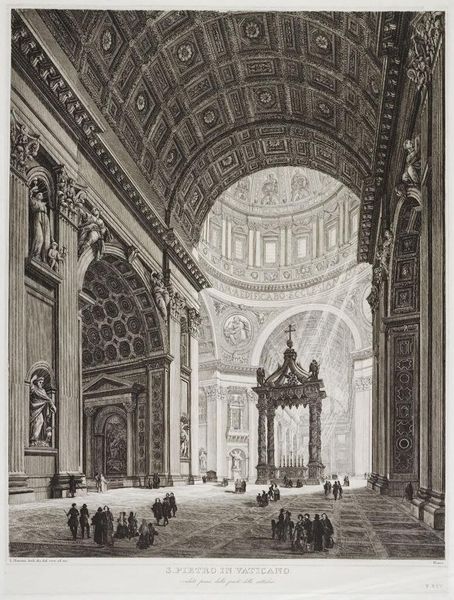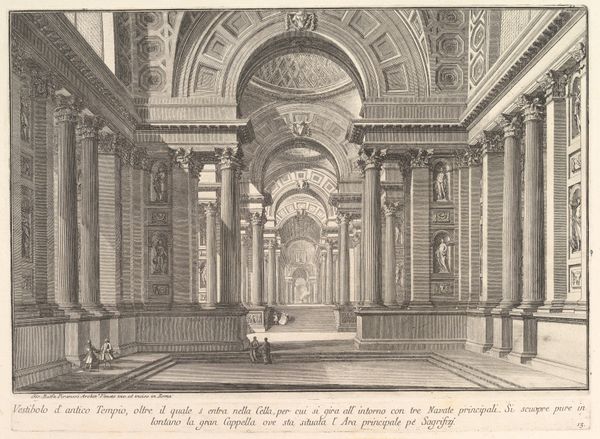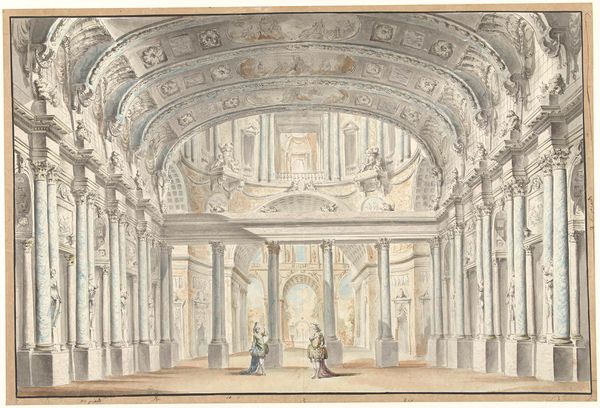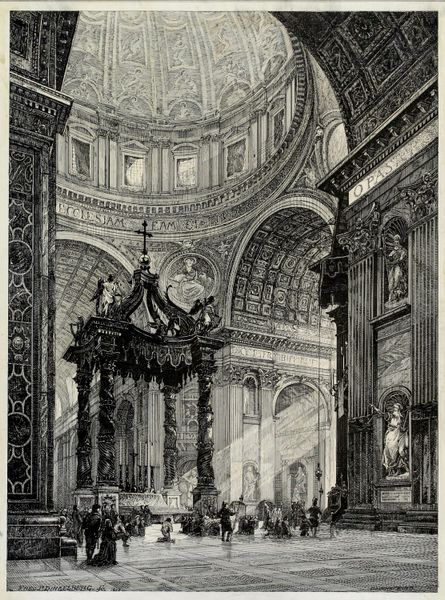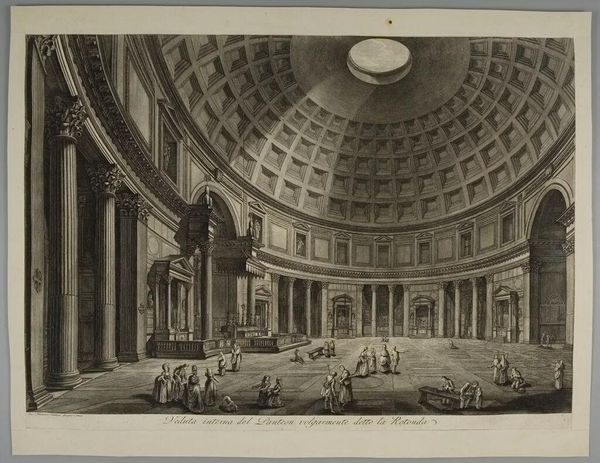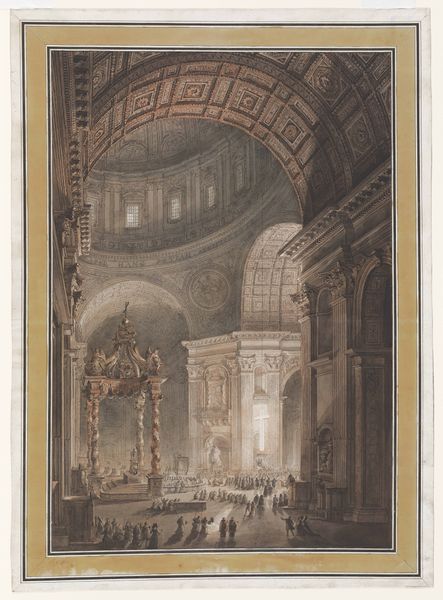
Interior View of the Church of St. Peter's in the Vatican c. 1770
0:00
0:00
Dimensions: 580 × 885 mm
Copyright: Public Domain
Curator: The soaring space depicted here is Francesco Panini's "Interior View of the Church of St. Peter's in the Vatican," created around 1770, using gouache, etching, and ink on paper. What’s your initial response? Editor: Immense, awe-inspiring, yet oddly cold. The perspective emphasizes the church's grandiose scale, dwarfing the figures within. There’s a clear, almost mathematical, order but what about the narratives implied by such a display of power? Curator: Well, let's consider the historical context. The papacy during this period aimed to solidify its authority, particularly after challenges from the Reformation and Enlightenment ideals. Panini’s detailed representation isn't just a depiction; it's a statement of the Church’s enduring power. The precise perspective and detailed ornamentation served as visual propaganda. Editor: Propaganda perhaps, but through careful manipulation of very established motifs. Columns, arches, domes…they’re all classical symbols of power and divinity. Light floods the scene—again, that radiant illumination traditionally associated with divine presence. What fascinates me is the blend of historical memory with architectural and even spiritual symbolism here. Do the people add to it or are they there merely as another motif? Curator: The figures become almost like decorative elements within the larger composition, reinforcing the overwhelming scale of the Church. However, their presence—their implied devotion or observation—activates the space. Their identities or positions do not appear important. Editor: Precisely. We’re presented with an idealized image—not reality. What the symbolic structure of St Peter's suggests about its power transcends mere architectural prowess; it speaks of cultural endurance, spiritual dominance visualized for an audience primed to receive the message embedded in these symbolic forms. This message goes further to solidify and ensure political authority through architecture. Curator: The artwork underscores the importance of considering artistic representations not just as aesthetic objects but as tools deployed in complex historical, religious, and sociopolitical struggles. By rendering the architecture larger-than-life, Panini and, by extension, the Vatican asserts a position of unquestionable authority. Editor: Ultimately, looking at it again I do appreciate how enduring symbols shape perceptions, memory and cultural identity. It's as potent now, even as a reproduction on paper, as it must have been then, for visitors walking in those immense hallways for the first time.
Comments
No comments
Be the first to comment and join the conversation on the ultimate creative platform.

